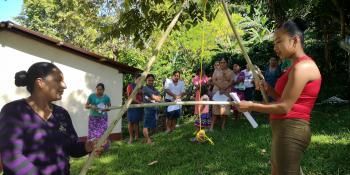The ways we divide our world

Social Differentiation: the ways that people divide and categorize their social world, such as gender, caste, age, and physical ability.
The term social differentiation has been popping up with increasing frequency lately. Two questions have been at the forefront of discussion amongst classical and contemporary sociologists: How does differentiation overlay with social marginalization, and how can we account for it when pursuing social justice? At first these discussions considered only socio-economic status; more recently they include a wide variety of social differentiation factors.
Social differentiation depends on the “when” and the “where”
UN agencies typically categorize differentiation by gender, age and diversity. The latter category is quite broad, and can refer to ethnicity, caste, marital status, religion, nationality, sexual orientation, gender identity, or level of education - among others.
Not only are these factors numerous, they are also dynamic: they can change depending on the context. For example, marital status may influence employment outcomes in India but not in the Netherlands; individuals with albinism may experience security threats in Kenya but not Tunisia; a Ghanaian child with an intellectual disability may have similar life outcomes as her peers if born into a productive farming community but not if born into an urban area.
Some points of social differentiation exist only in specific parts of the world, such as men in Nepal who have been castrated for religious purposes and are now considered part of the ‘Third Gender’ classification, or ‘Sworn Virgins’ in Albania who are born girls and grow to be men who will never marry.
To encapsulate the limitless nature of cultural and social differentiation, an inclusive and adaptive definition is required. The Systemic Integrated adaptation (SIA) research program, part of CCAFS’ Long term adaptation Research Theme, defines social differentiation as the ways that people divide and categorize their social world, such as gender, caste, age, or physical ability (borrowing from Bourdieu (1979)). Particular emphasis is placed on the interdependent nature of differentiation, noting that individuals can embody multiple points of social differentiation that affect how they experience marginalization.
For example, a woman with a physical disability within a wealthy family may be less marginalized than a bodily-able woman from a poor family; in India and Nepal men may have greater power than women across castes, but women from higher castes will have more power than men from lower castes.
Furthermore, factors of social differentiation can be gained or lost, or they can evolve based on historical events, external/internal pressures and social movements. The evolution of social differentiation is particularly common in communities where abilities to travel and accumulate assets are changing considerably between generations, as is happening in CCAFS baseline sites, like Rupandehi, Nepal.
SIA research describes marginalization in Nepal and Ghana
In 2013 the SIA program administered a large-scale livelihood survey called the SIA social differentiation index to 345 households in Rupandehi. This tool, combined with participatory methods and direct observation, revealed that there were three categories of highly marginalized residents in Rupandehi: 1) low ranking women who were married into the home, 2) elderly persons who were no longer living with extended family because of disputes or migration, and 3) households of the minority Yadav caste. The latter category makes up the 10% of the population that tends to have lower income and education levels.
Each of these distinctions is important to consider in the design of inclusive climate change adaptation programming so as to not exacerbate existing inequalities. For example, in Rupandehi, young women from the minority Yadav caste are not permitted to formally join groups or cooperatives but they participate in other interventions that do not require membership such as visiting farm demonstration plots.
Communities experiencing climatic change are also likely to see changes in social differentiation. In Ghana, for example, the SIA research program is collecting evidence that suggests that malnutrition and ill health may be influencing levels of cognitive ability. Cognitive ability could in turn affect how future generations of farmers are able to process and make use of climate information and extension services.
Female infants also appear to be gaining less weight than male infants in Ghanaian focal communities. Within a couple weeks from birth male infants are heavier than female infants; this gap continues to expand as the children age. Child malnutrition is closely connected to school performance, meaning that preferential feeding may be contributing to lower educational outcomes for girls in the long term.
The three categories of most marginalized residents in Rupandehi could conceivably change quite rapidly, if for example low ranking women began contributing disproportionately to household income, if immigration patterns of the children of the elderly changed, or if members of the minority Yadav caste attained similar levels of education as the majority Tharu caste. Likewise, if feeding patterns for Ghanaian infants shifted, that category of marginalization might also shift or even cease to exist altogether.
Tracking differentiation and marginalization thus looks like a moving target. Nevertheless, considering its impact on adaptive capacity and exposure to climate risks, it is a challenge that’s well worth the effort.
Read more on the CCAFS blog about social differentiation and the SIA project:
How to put climate adaptation into action? Lessons learned from Nepal
Or visit the SIA Facebook page
Visit the following link for resources on Age, Gender and Diversity.



